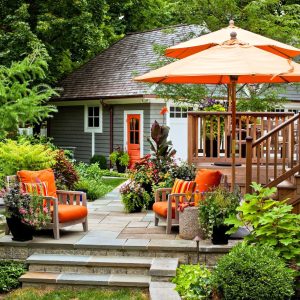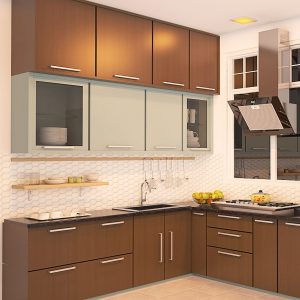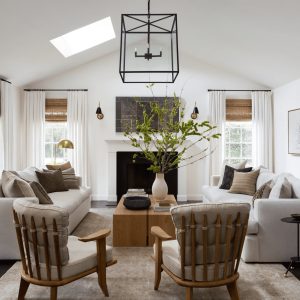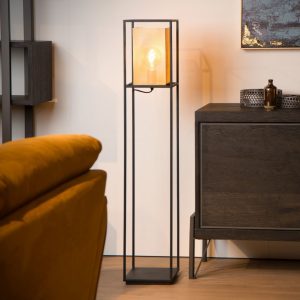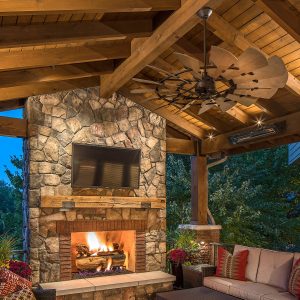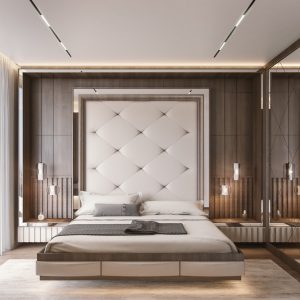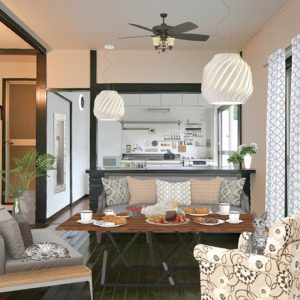
Introduction
The 1950s marked a decade of change and innovation in design, and nowhere was that more evident than in lighting. The era introduced new materials and technology, resulting in some of the most iconic and enduring lighting designs of all time. In this article, we’ll take a journey through the 1950s to explore the elegance and style of lighting that shaped an era.
The Materials of the 1950s
One of the defining factors of 1950s lighting was the use of new materials. Plastics and other synthetics were becoming more readily available and were finding their way into lighting designs. Lucite, a clear and lightweight acrylic, was used in many lamps and fixtures. Additionally, new manufacturing techniques allowed for the creation of molded and shaped pieces, opening a world of possibilities for designers.
Lucite Lamps
Perhaps the most recognizable example of a 1950s Lucite lamp is the iconic “bubble lamp.” Designed by George Nelson in 1947, this hanging lamp featured a spherical shade made of a thin, white plastic-coated fabric stretched over a steel wire frame. The result was a glowing, ethereal light fixture that became an instant classic. Other Lucite lamps of the era were often more straightforward, featuring chunky, clear blocks of the material as the base, topped with simple shades.
Shapely Shades
As mentioned, the advent of molding and shaping techniques allowed designers to create more sculptural shades. Many lamps of the era featured shades with undulating curves and forms, often made of materials like fiberglass. These shades could be used to create interesting patterns of light and shadow or to direct light where it was needed, while still adding visual interest to the design.
Colorful Creations
Color was another defining feature of 1950s lighting. New synthetic materials allowed for a wider range of hues to be used, and designers embraced the opportunity to inject some vibrancy into their creations.
Mid-Century Modern
The term “mid-century modern” refers to a particular design aesthetic that was popular in the 1950s and 60s. Characterized by clean lines, minimal ornamentation, and sleek materials, this style was pervasive in architecture, furniture, and product design. Lighting of the era embraced these principles, often featuring minimalist designs in bold colors like bright orange, teal, and chartreuse.
Tiffany-inspired
Tiffany-style lamps, often featuring intricate stained-glass shades, had been popular since the turn of the century. In the 1950s, however, these lamps saw a resurgence in popularity. Many designers created their own takes on the Tiffany-style shade, incorporating vibrant colors and bold geometric patterns.
Designers of the Decade
The 1950s was a time of significant advancements and experimentation in design, and lighting was no exception. Here are just a few of the designers who made their mark on the decade:
George Nelson
George Nelson was an influential designer who worked across many disciplines, including architecture, furniture, and product design. In 1947, while working for the Herman Miller furniture company, he designed the aforementioned “bubble lamp.”
Isamu Noguchi
Isamu Noguchi was a Japanese-American artist and designer who is perhaps best known for his sculptural coffee tables. However, he also designed a number of lighting pieces in the 1950s, including the iconic “Akari” lamps. The Akari series features paper lanterns made with traditional Japanese methods and materials.
Greta Magnusson Grossman
Greta Magnusson Grossman was a Swedish-American designer who moved to Los Angeles in 1940. Her work is characterized by clean lines and simple, geometric shapes. She created a number of lighting designs in the 1950s, including the “Grasshopper” lamp, which features a thin, angled stand and a conical shade.

